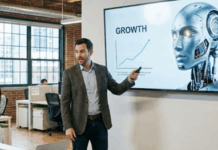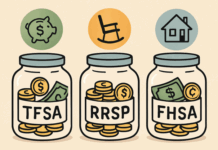The UX design industry enters 2025 at a crossroads. After years of AI hype and post-pandemic digital transformation, designers face new challenges around accessibility compliance, sustainability concerns, and the evolving role of artificial intelligence in creative workflows. We spoke with UX/UI designer Osman Gunes Cizmeci about the trends he expects will shape the industry this year.
AI Integration Moves Beyond the Hype
After the initial excitement surrounding generative AI tools, 2025 marks a maturation phase where designers approach AI with more strategic thinking. Rather than adopting AI simply because it exists, teams now evaluate whether these tools genuinely add value to their workflows.
“We’re past the phase where adding AI features was enough,” Cizmeci explains. “Now designers ask harder questions: Does this AI tool actually solve a user problem, or are we just chasing trends? The most successful teams use AI to automate repetitive tasks—like generating alt text or analyzing user research data—while keeping humans in charge of creative direction.”
Tools like Figma’s AI features and research analysis platforms have become more sophisticated, but Cizmeci warns against over-reliance. “AI can suggest design variations and speed up prototyping, but it can’t understand why a particular interaction feels trustworthy or how a color choice affects brand perception. Those insights still require human judgment.”
The shift represents a move from AI novelty toward AI utility, where tools earn their place in design workflows through demonstrated value rather than technological impressiveness.
Accessibility Becomes Non-Negotiable
The European Accessibility Act compliance deadline has created urgency around accessible design that extends far beyond Europe. Organizations worldwide recognize that accessibility can no longer be treated as an afterthought or checkbox exercise.
“Accessibility is finally getting the attention it deserves, not just from a legal perspective but as fundamental good design,” Cizmeci notes. “When you design for users with disabilities from the start, you create better experiences for everyone. Clear navigation helps all users, not just those using screen readers.”
Teams are integrating Web Content Accessibility Guidelines (WCAG) 2.2 standards into their design processes from project inception rather than retrofitting accessibility features. This approach reduces development costs while creating more inclusive products.
Cizmeci sees AI playing a supporting role here as well. “AI tools can automate contrast checking and generate descriptive alt text, but they can’t replace thoughtful research with diverse user groups. The technology helps with compliance, but human insight drives truly inclusive design.”
Sustainable Design Gains Momentum
Environmental consciousness is reshaping how designers approach digital products. The growing awareness of technology’s carbon footprint has designers optimizing for performance and efficiency to reduce unnecessary data usage and energy consumption.
“Users are becoming more conscious about the environmental impact of their digital consumption,” Cizmeci observes. “They notice when apps drain battery life or consume excessive data. Sustainable design isn’t just about corporate responsibility—it’s about creating better user experiences.”
Practical applications include optimizing images, minimizing autoplay videos, and reducing energy-intensive animations. Design systems now consider performance implications alongside visual consistency, creating frameworks that look good while consuming fewer resources.
The trend extends to ethical design practices around privacy and user manipulation. “Sustainable design means respecting users’ time, attention, and data,” Osman Gunes Cizmeci explains. “Dark patterns might drive short-term engagement, but they damage long-term trust. Smart companies prioritize user well-being over engagement metrics.”
Research and Strategy Skills Become Essential
AI’s ability to handle routine design tasks has elevated the importance of research, critical thinking, and strategic problem-solving skills. Designers who can connect user insights to business outcomes position themselves as valuable strategic partners rather than execution resources.
“Screen-level design skills remain important, but they’re becoming table stakes,” Cizmeci says. “The designers who thrive are those who can ask the right research questions, interpret behavioral data, and translate user needs into product strategy. AI can’t replace that level of insight and synthesis.”
This shift requires designers to develop comfort with ambiguity and complex problem-solving. Rather than jumping straight to visual solutions, successful teams spend more time understanding user behavior patterns and business constraints.
“Tools like Stitch can generate layouts quickly, but they can’t tell you whether you’re solving the right problem,” Osman Gunes Cizmeci notes. “Human researchers and strategists identify the problems worth solving in the first place.”
Design Opportunities Expand Beyond Tech
Digital transformation across industries has created demand for UX designers in healthcare, finance, government, and other traditionally non-tech sectors. These organizations need designers who understand both digital best practices and industry-specific user needs.
“The most exciting opportunities aren’t necessarily at tech companies anymore,” Osman Gunes Cizmeci explains. “Healthcare systems need designers who understand patient anxiety and medical workflows. Financial services need people who can make complex products feel trustworthy and accessible. These contexts require deep empathy and domain knowledge.”
This expansion requires designers to develop industry expertise alongside design skills. Understanding regulatory requirements, user behaviors, and business models in different sectors becomes as important as mastering design tools.
“Each industry has unique constraints and opportunities,” Cizmeci observes. “Designing for a fintech startup requires different thinking than designing for a hospital system. The best designers learn to adapt their approach while maintaining core UX principles.”
The Human Element Endures
Despite technological advances, Osman Gunes Cizmeci emphasizes that successful UX design remains fundamentally human-centered. “Tools evolve quickly, but understanding people’s needs, emotions, and behaviors requires patience and empathy that no AI can replicate,” he says.
The designers who succeed in 2025 will balance efficiency gains from new tools with deep user understanding and strategic thinking. “We’re not competing with AI—we’re learning to collaborate with it while focusing on what humans do best: understanding other humans and solving complex problems creatively.”
Success requires continuous learning and adaptation, but the core mission remains unchanged: creating digital experiences that genuinely serve user needs while achieving business goals. “The best design has always been invisible,” Cizmeci concludes. “Whether we’re using AI tools or traditional methods, our job is helping people accomplish their goals with minimal friction and maximum confidence.”
Find a Home-Based Business to Start-Up >>> Hundreds of Business Listings.















































